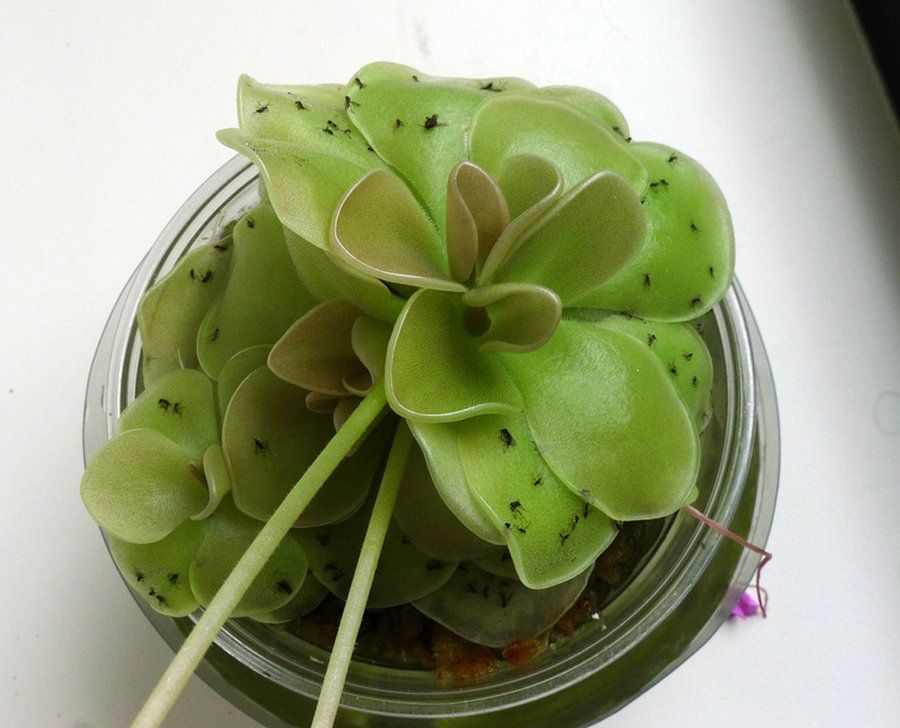
FUNGUS GNAT TREATMENT
Fungus gnats are some of the most prevalent indoor plant pests that we deal with when caring for our indoor plants. However, unlike most houseplant pests, they are unlikely to cause any damage to our healthy plants. Uniquely, fungus gnats are mainly annoying to us humans. Very, very, annoying. There is a common misconception that fungus gnats eat healthy plant roots. Luckily, they are much more likely to munch on fungus growing in the soil and any rotting root or plant matter–hence their common name, fungus gnat.
Fungus gnats can be introduced into a space many different ways. They can come in on new plants, a bag of soil that was outside, or even get carried in on produce. When treating fungus gnats, it is necessary to treat multiple life stages, which helps ensure that the bugs can no longer proliferate. You need to treat existing eggs and larvae in the soil, prevent eggs that may be laid, and eradicate the adult population (these are the guys we see flying around).
Treat the soil. Fungus gnats typically lay their eggs in the top inch of the soil, and they will usually pick a plant whose soil remains moist. To treat, you will want to make a solution of hydrogen peroxide and water to sterilize the soil and kill larvae and eggs that may be in it.
What you will need: water, 3-6% hydrogen peroxide, and a container to mix and apply with.
Use 1-2 tablespoons of hydrogen peroxide per cup of water, and mix enough to saturate the entire root ball. Mix well, then apply to the soil. Hydrogen peroxide is root safe though it can look a little scary, because it will begin to bubble up when poured in. This is normal!
Alternative: you can also swap the hydrogen peroxide solution with mosquito bit tea. Mosquito bits will need to be steeped in water, most folks will soak them overnight. Then water your plants with the tea solution.
Treat the adult population. The adults are the little bugs that we see flying through the air, crawling in the soil, and landing in our beverages. Luckily, they are attracted to the color yellow.
What you will need: yellow sticky fly traps
Position the sticky traps in your affected plant, using multiple if possible. The adults will be drawn to the color, and land on the traps. Change out as needed, until you do not notice any more bugs accumulating on the traps.
Prevent new eggs from being laid. This is the step that is most often missed, but is just as important. You will want to form a barrier that discourages the gnats to crawl in, or out, of the soil.
What you will need: cinnamon or diatomaceous earth
For this step, you will want to put a thick layer of cinnamon or diatomaceous earth on top of the soil. The gnats don’t like cinnamon, and will typically not try to pass through it. The cinnamon also helps keep the top layer of the soil a little bit drier. Diatomaceous earth is actually made from fossilized algae, and has extremely small particles. The particles are sharp, and will cut the bugs if they try to dig into it.
Fungus gnats also feed on any rotting, organic material. Remove old banana peels, or other old fruit and vegetables that may attract infestations.




